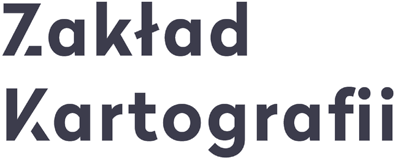MARCO Project
Methods of spatial Analysis, forecasting and Recommendation in preventing the spread of COVID-19
The project aims to develop a methodology for the analysis of spatio-temporal simulation of the development of the COVID-19 pandemic enabling the construction of a decision support system in the field of social distancing. The project's implementation requires collecting and processing of multi-source epidemiological, spatial, demographic, economic, climatic and social data (among others, official data on the disease and the course of treatment, highly accurate multi-source terrain models, population distribution, meteorological data, air pollution, residents' mobility, applied restrictions). The data collected in the repository will enable the knowledge extraction by building three simulation models using: (i) multi-agent modeling, (ii) deep learning, (iii) Monte Carlo simulations. The simulation methods used will facilitate the extraction of outbreaks (characteristic of COVID-19). The results obtained with each of the methods will be compared and calibrated mutually, based on historical data on the spatio-temporal spread of the COVID-19 pandemic.
Within the project, the obtained results will enable the development of models and algorithms for the optimization of recommendations for social distancing, as well as effective geo-visualization methods for the model simulation of the pandemic's progress. Simulation models developed as part of the project will also facilitate the testing of diverse scenarios for carrying out policies aimed at preventing the spread of a pandemic, e.g., the potential outcomes of applying the policies used in Asia (China, Japan, Taiwan), Europe (Italy, Sweden, Germany), and the US to the Polish conditions. The results of simulations run using three different approaches will be compared with each other in terms of economic, social, and health costs, computational efficiency, and prediction accuracy. They will also be used to build decision models and, as a result, to develop a concept of a decision support system that utilizes official topographic, demographic, and social data.
The publication of four 140+ research articles will constitute the measurable outcome of the project's implementation. The research will use epidemiological data from the Department of Analysis and Strategy of the Ministry of Health and data collected in the CENAGIS (Center for Scientific Geospatial Analyses and Satellite Computations) digital repository of spatial data. Consequently, it will enable running simulations for the entire country, not just for fragmentary test areas. Thanks to an interdisciplinary project team comprising employees of the Warsaw University of Technology (Faculty of Economics and Information Technology, Faculty of Geodesy and Cartography, and the Centre for Innovation and Technology Transfer Management), the University of Warsaw, the Medical University of Warsaw, and the Institute of Biotechnology and Antibiotics, it will be possible to implement a complex project using the synergy effect of diverse medical, geoinformation, IT, and social knowledge. Access to reliable multi-source data will be possible thanks to the cooperation with the Ministry of Health, WHO, European Center for Disease Prevention and Control, Ministry of Health (Italy), Sweden (Public Health Agency of Sweden), Germany (RKI Germany), GB (Public Health England), and Polish municipal authorities. Scientific collaboration with an expert from Harvard Medical School/New York University will ensure the comparability of results with the leading models developed in the USA. Because of the simulation systems developed as part of the project, it will be possible to model and visualize diverse scenarios for an epidemic spread in the Polish conditions at a high level of detail and to create generalized simulations for the entire world, as well as evaluate the results on the basis of the official epidemiological data. The end result of the project (apart from scientific publications) will be developing a concept of a decision support system for central and local government administration. Another essential element will also be the proposal of various data visualization methods that utilize professional cartographic knowledge.

